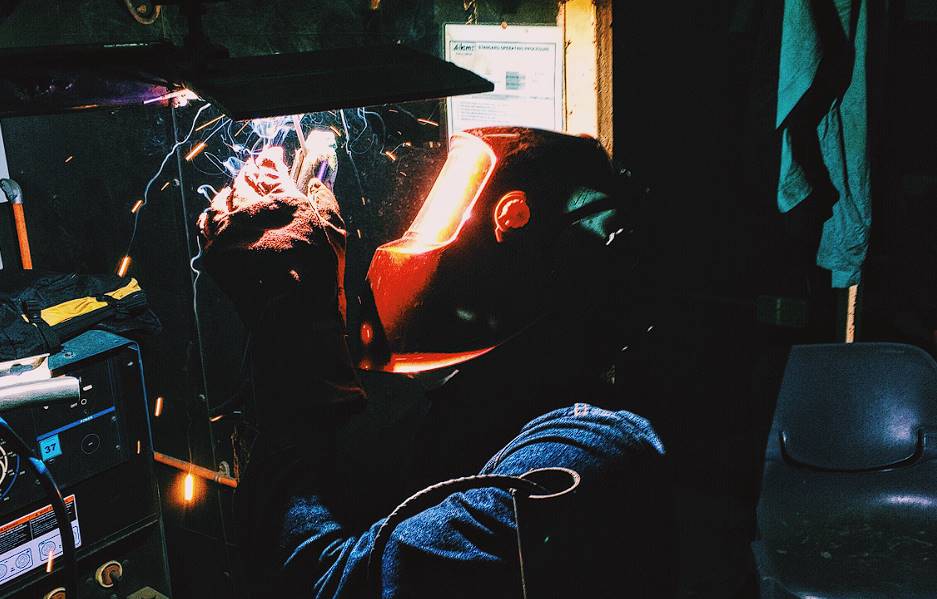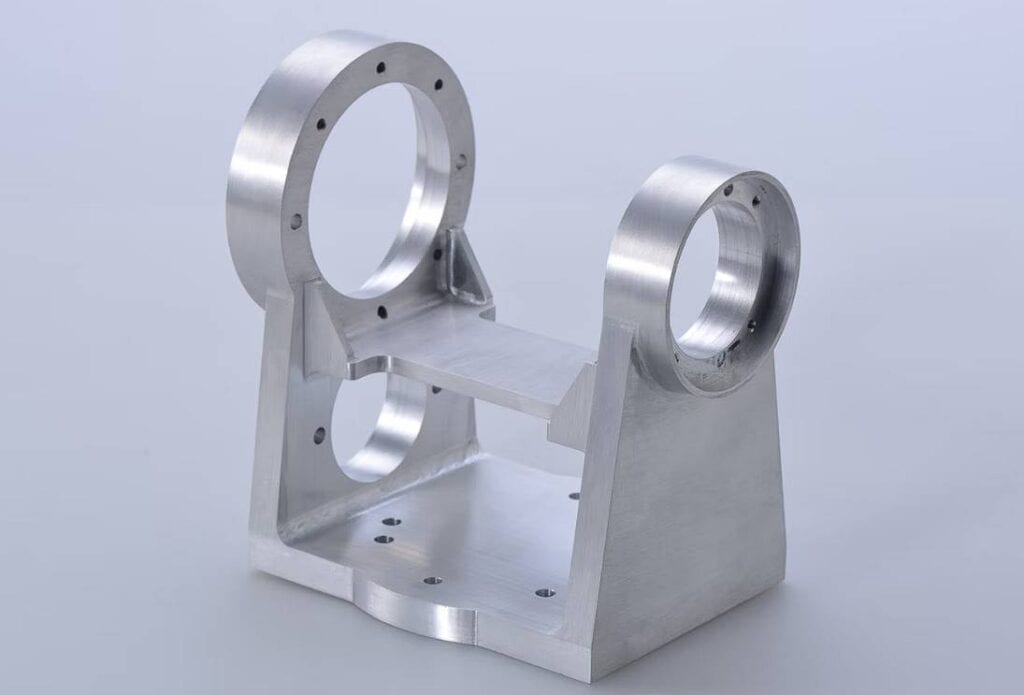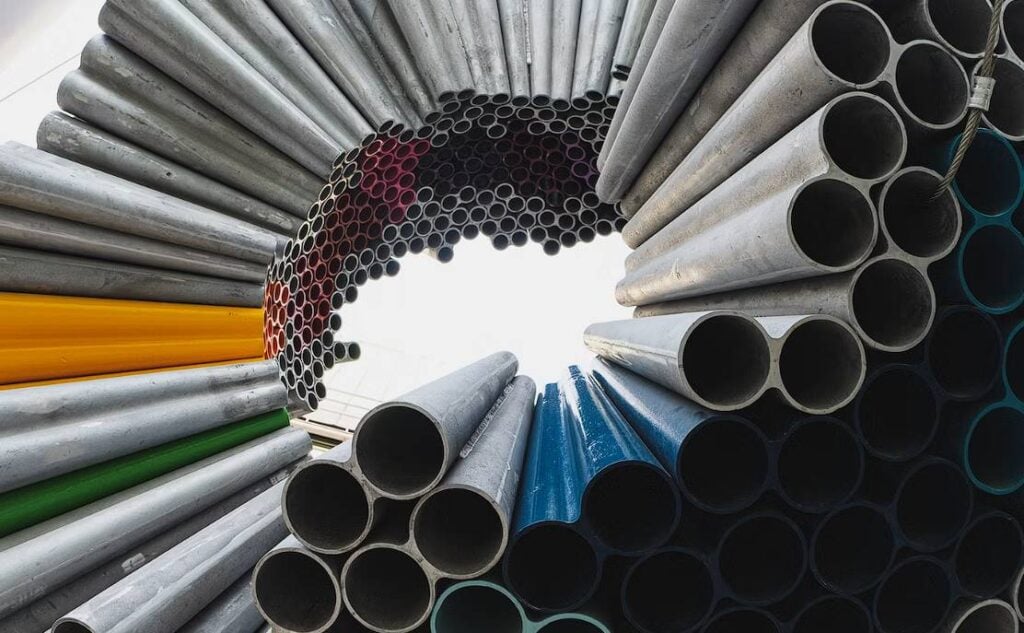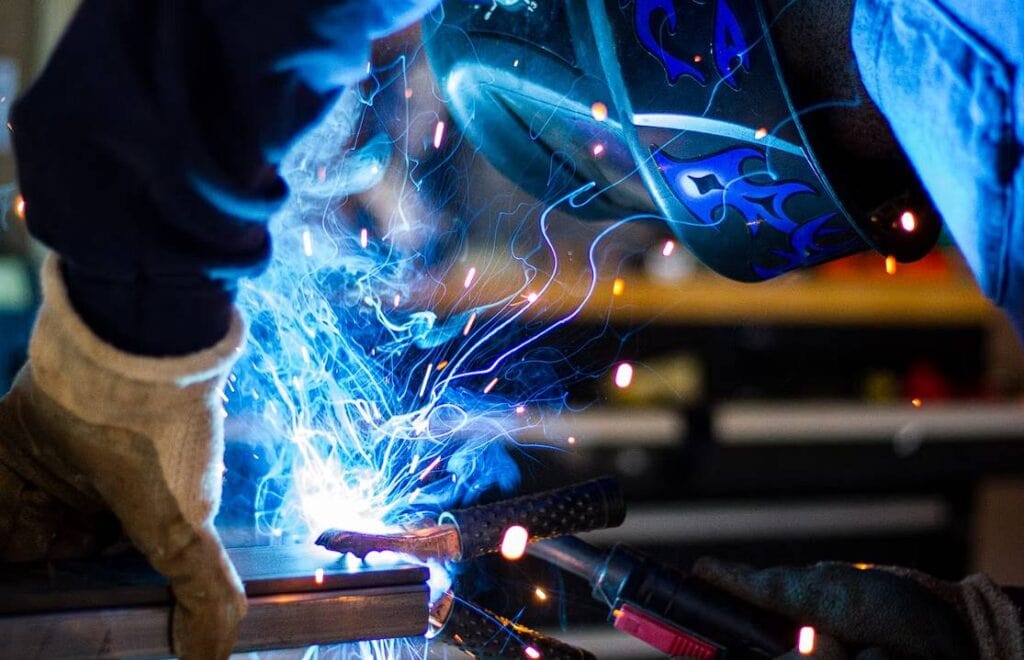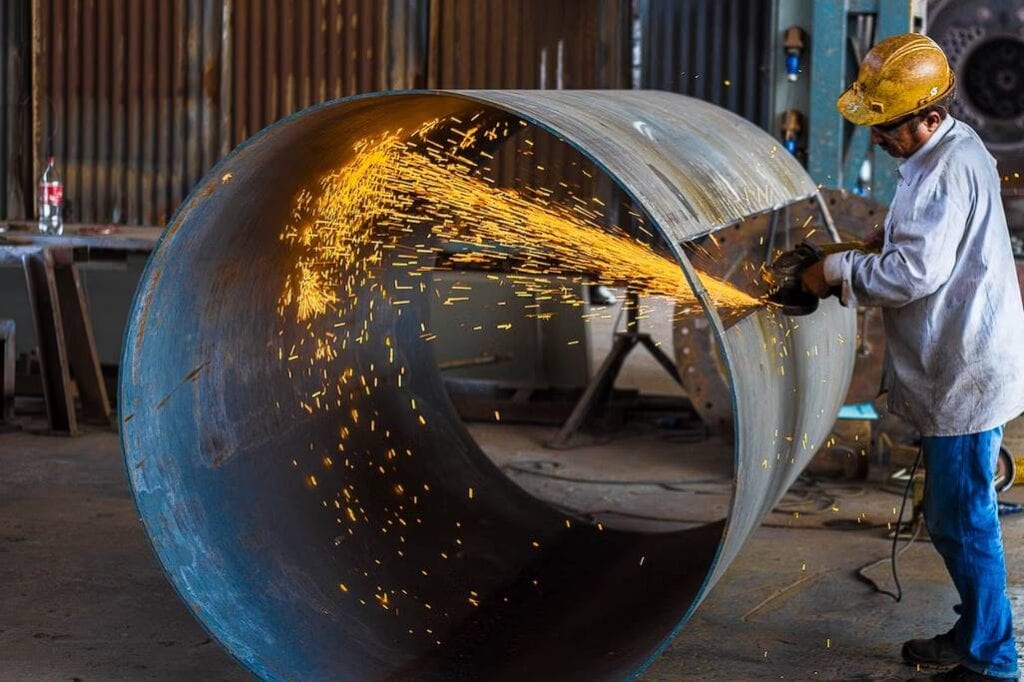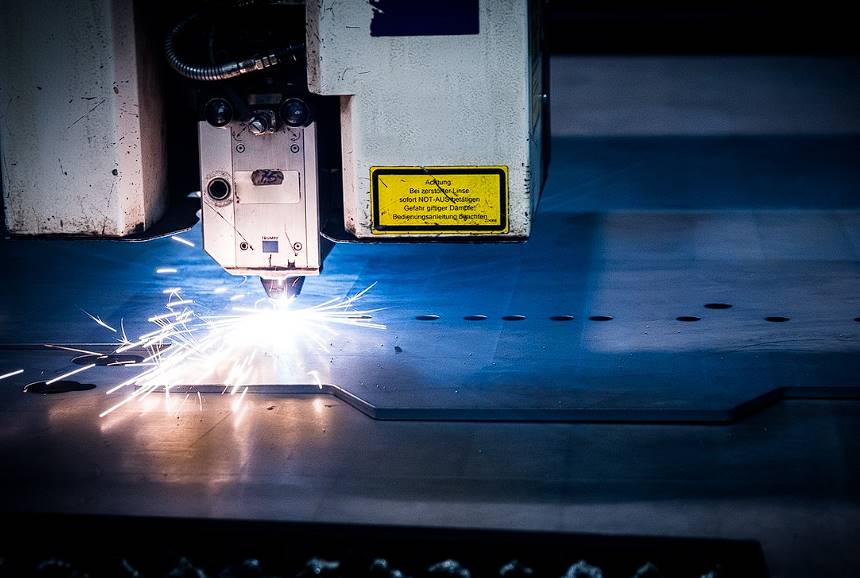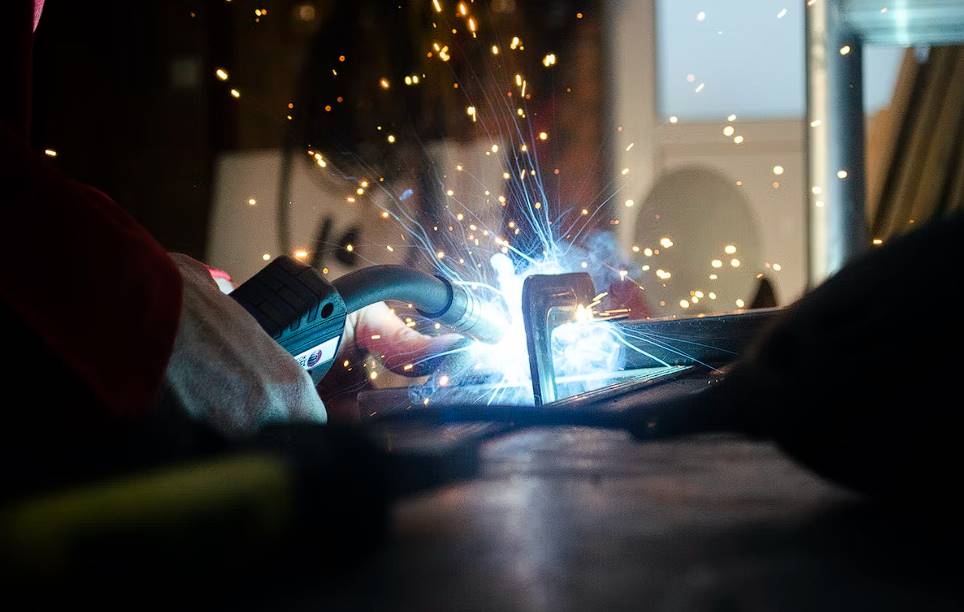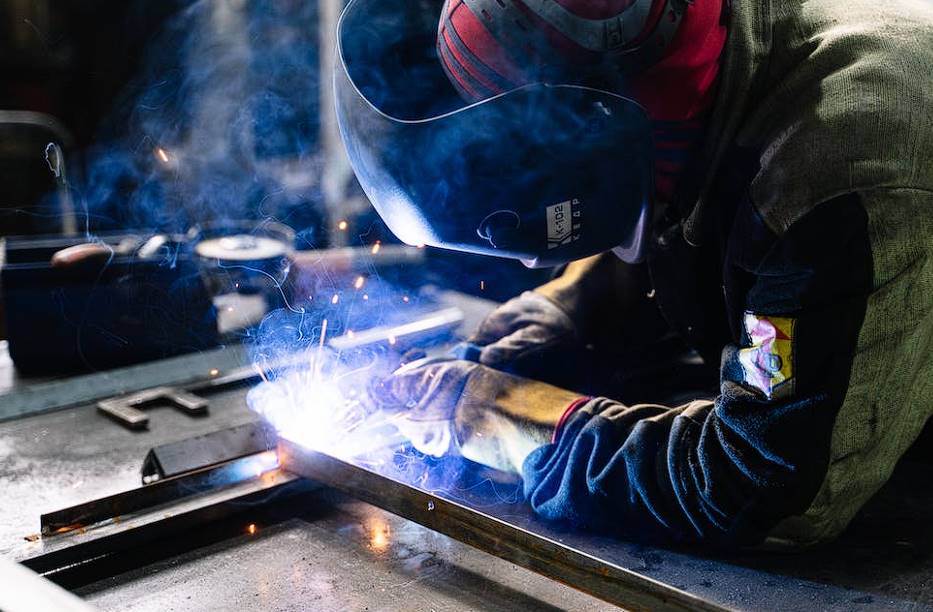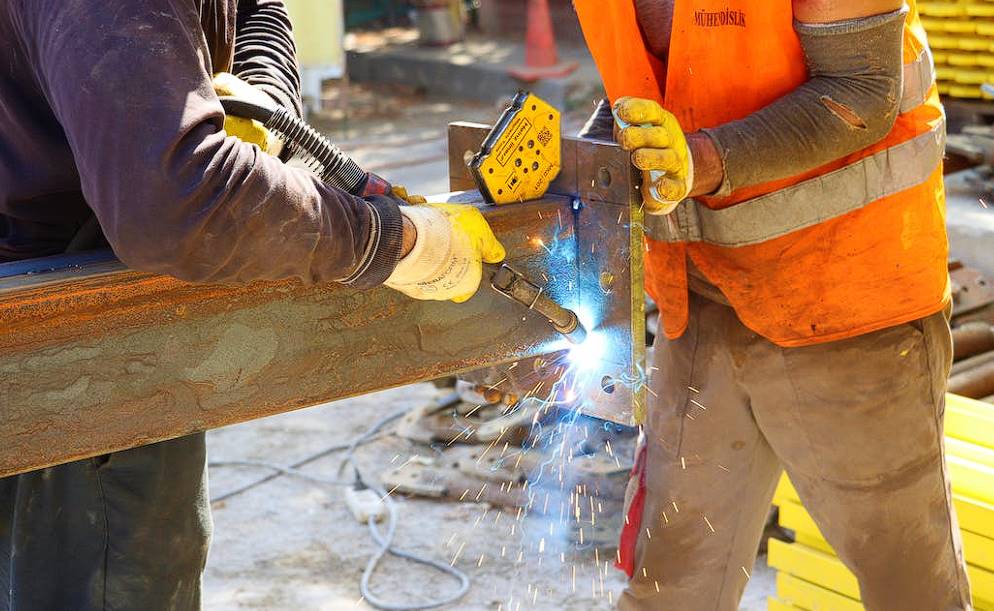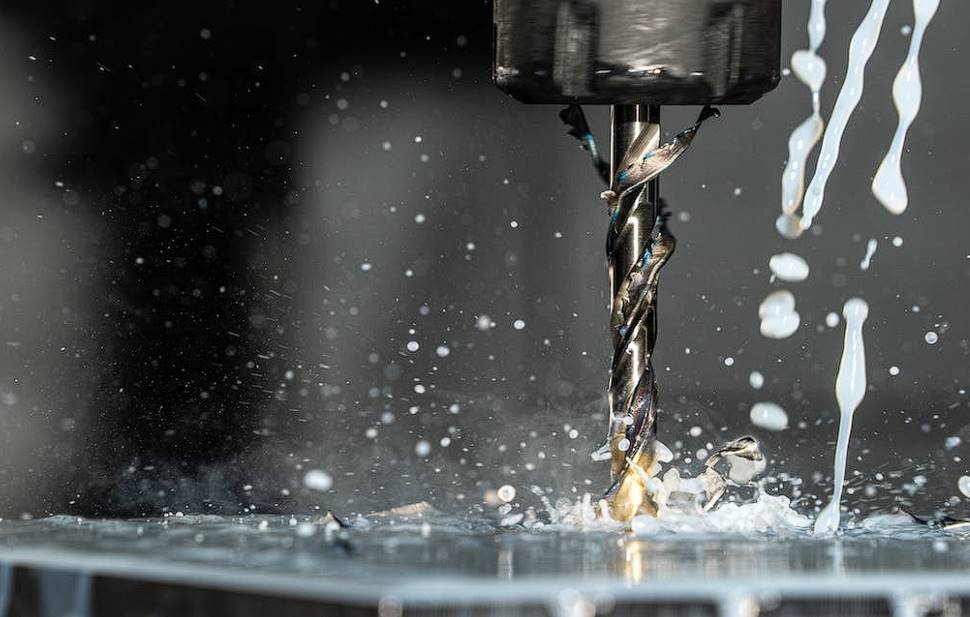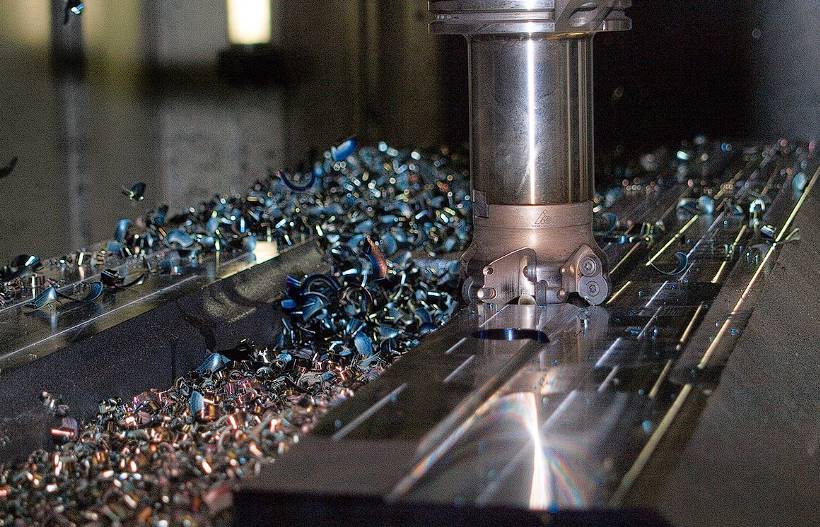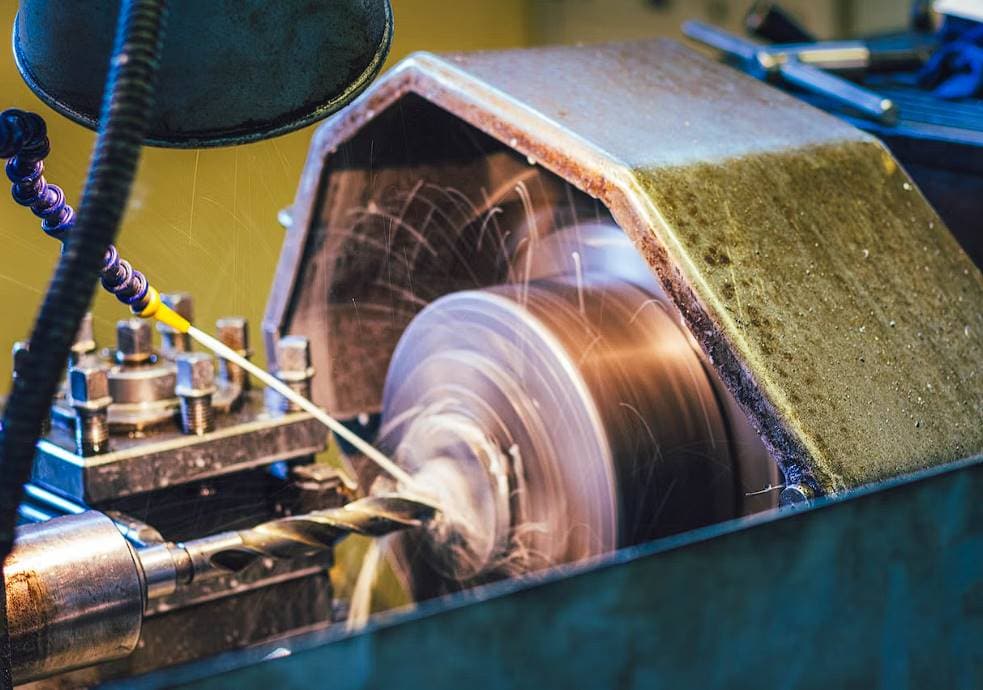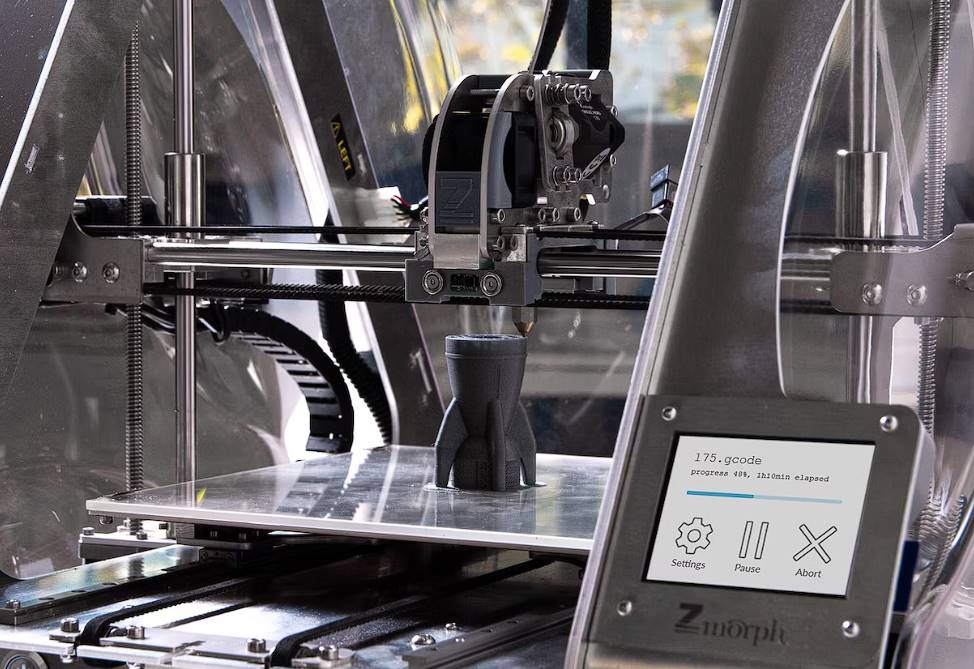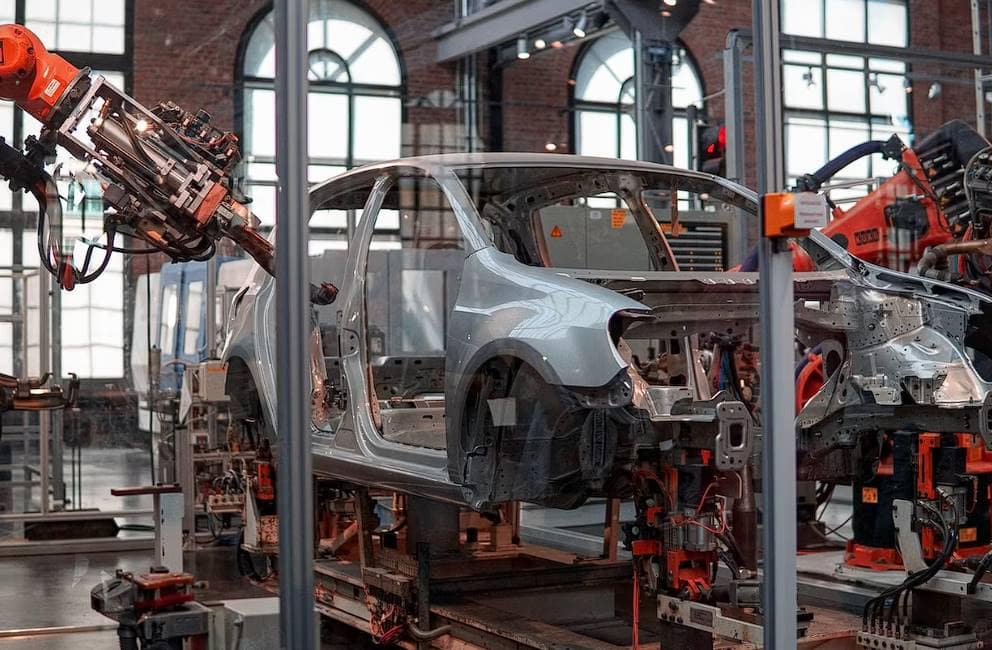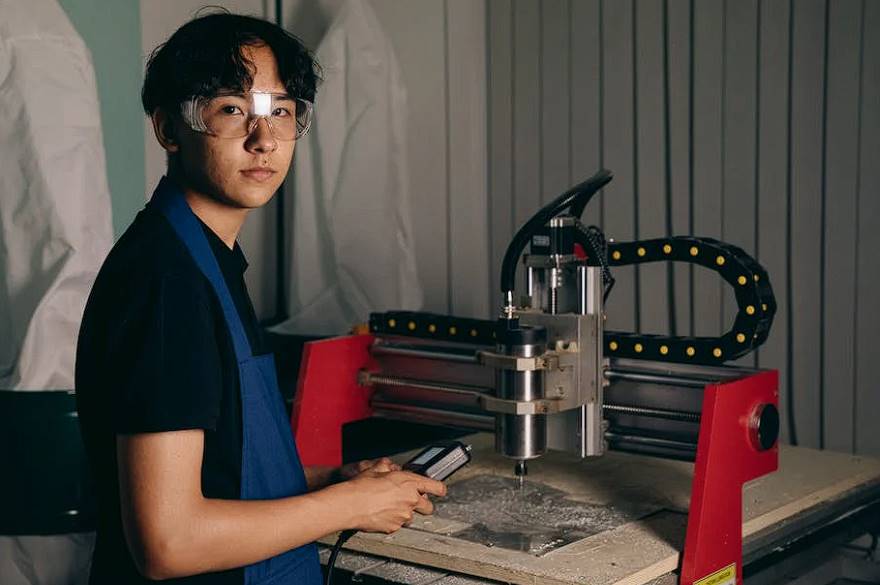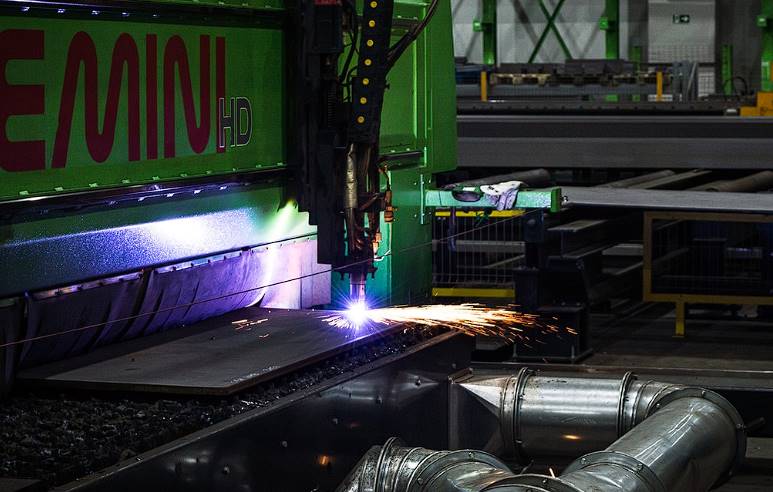Welding is one of the most effective ways of joining metals to create new objects. It is a crucial process in the final stages of sheet metal fabrication. However, welding defects are possible due to the possibility of weld failure.
Sheet metal welding is notoriously prone to flaws in the weld. Common causes of these flaws include poor welding techniques and improper welding patterns. If they happen inside a weld, the joint will weaken, or the product will fail. Therefore, it is crucial to investigate the origins of these flaws and take measures to avert them.
All the different kinds of welding flaws, what causes them, and how to avoid them are covered here. You'll also pick up some tips for spotting flaws that take time to notice. Differentiating between defects and discontinuities is simplified here.
What Is A Weld Defect?
In its simplest form, a weld defect is any imperfection in a weldment that prevents it from being used as intended.
This also suggests that a defect or imperfection might not render the weld useless; in such cases, the weld is discontinuous. It follows that a break in continuity is not necessarily indicative of a flawed weld.
The weld is considered defective if the number of discontinuities is high enough (i.e. if it exceeds a limit defined by an applicable code or specification).
Simply put, a weld must be sturdy enough to serve its job, and any flaws can compromise its integrity. However, there are situations where the aesthetic quality of the weld is also important. Therefore, most flaws either reduce the strength of a weld or give it an unsightly appearance.
Everyone here hopes their welds will pass inspection and be accepted. Therefore, it is important to recognise the various forms of defects and learn to prevent them.
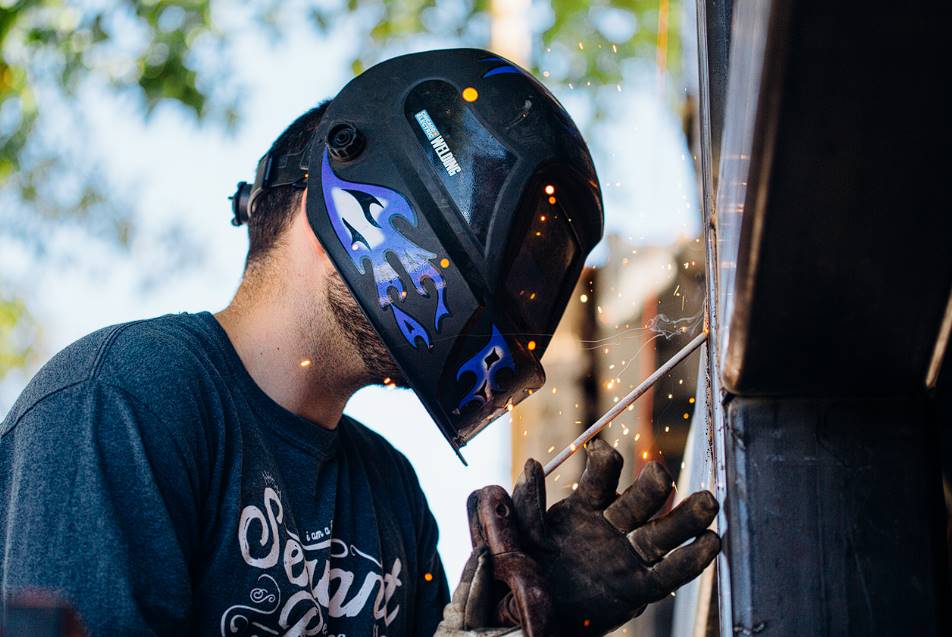
What Causes Weld Defects?
A variety of factors can cause welding defects. Reasons include, but are not limited to:
Insufficient Weld Prepare
Preparation is the key to a successful project, and welding is no exception. Many issues, such as contamination and porosity in the welded product, can arise if the materials need to be properly cleaned before welding.
Keep that in mind as you consider renovations for your home. When did you last clean and sanded to remove rust and paint? Yes, you are on the right track with this. This way, you can focus solely on ensuring your materials are clean and ready to be welded without worrying about anything else.
Operator Error
The welder rarely causes weld defects. This could be due to a need for more knowledge about the welding process or the welder itself. Whatever the case, it is important to keep operator error to a minimum, as it is a major contributor to welding defects.
Contaminated Welds
Dirt, rust, sand, and paint chips are some pollutants that can contaminate the welding zone. Fluxes and coatings like oil can also contribute to contamination. The most significant concern is that the presence of these contaminants reduces the strength of your welded joints, either by causing porosity in the final product or contributing to cracking. If you think your welds might be contaminated, clean them up and reweld them if necessary. If you discover that is impossible, start over.
Low-Quality Welding Materials
Using low-quality welding materials is risky in any construction job. Weld defects can be caused by using inferior electrodes or fluxes. To get the best results possible when welding, it's important to use high-quality materials made for the purpose.
Improper Welding Procedure
A poor weld is the result of a poor welding process. Welding mistakes include:
- Not using shielding gas.
- Having an inaccurate electrode extension (too long or too short).
- Using the wrong shielding gas for the material being welded.
- Using an erroneous arc length (too small or too large).
Poor Weld Joint Design
Joints can also fail to weld correctly if they are not constructed properly for the structural loads or purposes for which they will be used. For instance, if a thick-walled flange is attached to a heavy, smooth pipe with too little of a radius for extra strength, the outcome could be localised high stress brought on by corrosion or overheating. If this is the case, the weld joint design is flawed, and the problematic section of the pipe should be rethought.
Wrong Welder Settings
Incorrect welder settings can cause welding defects. Undercut is one such imperfection that happens when the arc length is too short for a given electrode extension, causing the base metal to be seared and melted at the toe, leaving a concave fillet underneath.
Poor fusion between metal layers can lead to weak spots and porosity when welding with an excessively long electrode extension, especially if the metal pieces don't melt together properly from a lack of penetration. Adjusting your welder's settings to shorten the electrode's extension, switch electrodes, or increase the current flow may help when this occurs.
Common Types Of Weld Defects
Weld defects come in a wide variety, but the following are among the most typical:
Cracks
Cracks are one of the most common and potentially disastrous weld flaws, so let's address them first. These cause a weld to weaken, and cracks spread rapidly.
You should want your welds to be free of any cracks. However, there are three primary varieties of cracks to contend with.
- Splits in a weld that extend in a longitudinal direction are called longitudinal cracks.
- Transverse cracks traverse the width of a bead.
- Crater cracks typically appear after the arc has been cut off, marking the end of the welding process. The dent or "crater" at the end of a weld causes these star shapes to appear.
Hot and cold cracks are two additional types of fissures. Hot cracks form in molten welds as they cool and solidify, and welds can be heated to temperatures above 10,000 degrees Celsius. When the incorrect alloy filler material is used, hot cracks frequently appear.
When the weld cools, it can develop cold fractures. Even days or hours after a joint is made, complications can arise. This flaw typically appears during the welding of steel and is the result of underlying base metal irregularities.
Taking particular measures to reduce the possibility of cracks in welds is crucial. First, controlling the cooling rate and avoiding cracks can be achieved by reducing the heat input during welding. Second, some materials are less likely to crack if the base metal is heated before use. Finally, using the proper welding consumables can achieve a stronger and more resilient weld with less chance of cracks. Welders can produce stronger welds with less cracking by using these methods.
Lack Of Fusion
This happens when the materials used to weld don't fully fuse, leaving the joint vulnerable. Poor preparation, improper welding settings, or contamination are common causes of non-fusion. The problem can be fixed by re-welding after cleaning the weld zone.
Several crucial factors must be considered to achieve proper fusion in welds. The base metals can be better melted and bonded with a higher welding heat input. Proper welding techniques guarantee a well-formed weld pool, leading to improved fusion. In addition, being able to regulate the cooling rate is an important factor in ensuring a successful fusion journey. Welders can create strong, long-lasting welds with excellent fusion by carefully balancing these factors.
Inclusions
Inclusions are the impurities that are trapped inside a weld. There is a dramatic decrease in strength when contaminants are trapped inside a weld.
Many welding processes, including brazing, stick welding, flux-cored welding, and submerged arc welding, result in the formation of slag. The slag mustn't be prevented from rising to the surface by being trapped inside the bead. Therefore, it is important to slow down the cooling process of the molten pool.
However, this is also a possibility when MIG welding. Small particles of rust or tungsten can be considered slag and contaminate your welds. So, flaws can appear in both MIG and TIG welding.
Welds that are free of inclusions are the result of careful preparation. To begin, reducing the potential for inclusions requires using a well-suited welding method for the job at hand. Second, avoiding the trapping of foreign substances by keeping the welding area and the base metal clean is of paramount importance. Finally, smooth and clean welds, in which inclusions are not present, result from careful electrode management during welding. Welders can produce higher-quality work with fewer flaws if they adhere to these standards.
Undercut
Undercut flaws are notches in the base metal that form irregular grooves. They form when the base metal melts in a location distant from the weld zone and can be identified by their size, depth, and degree of sharpness. An undercut welding defect is a loss in thickness that occurs in a straight line parallel to the weldment. The weld joint will be more prone to fatigue because of this.
Different kinds of undercuts include:
- Inter-run undercut
- Continuous undercut
- Intermediate undercut
Paying close attention to welding parameters is essential for avoiding undercutting in welds. The weld profile can be kept in check by adjusting the current, voltage, and welding speed. The risk of undercutting can be reduced by depositing just the right amount of filler metal while keeping the electrode at the proper angle. The risk of the undercut can be mitigated by regulating the travel speed to ensure that the weld bead cools uniformly. Welders can create high-quality welds without undercut flaws by carefully controlling these factors.
Poor Weld Penetration
Weak joints are a major problem in welding, and poor weld penetration is a major cause. This problem occurs when the welded metal does not penetrate the seam completely. Incorrect welding settings, employing the incorrect welding process, or employing an inappropriate electrode all contribute to this issue.
Poor weld penetration can be fixed by adjusting the welding machine's settings to the correct levels. In addition, getting a deep enough cut requires picking the right electrode for the job. To improve weld penetration, switching to a different welding process may be necessary. Welders can guarantee stronger, more reliable welds with better penetration by paying attention to these details.
Porosity
Porosity in a weld, also called a wormhole weld, occurs when gas bubbles become trapped inside the weld. It's been said that this is porous as well. If you cut a porous weld bead in half, you'll see air bubbles, like in a sponge.
Gases such as hydrogen, steam, and carbon dioxide are often produced during welding and bubble out of the molten bead. However, the joint will weaken, and the work will be ruined if the gas bubbles are trapped.
To keep weeds from becoming porous, certain precautions must be taken. The first step in preventing gas pockets while welding is to ensure the base metal has been properly cleaned. Second, welding with dry electrodes eliminates the possibility of porosity due to moisture.
Lastly, preventing atmospheric contamination of the weld pool depends on keeping an adequate gas shield throughout the welding process. Welders can get flawless welds with high structural and mechanical strength if they follow these procedures to the letter.
Spatter
Small pieces of metal, known as "spatter," are flung from the welding arc. Whether an ARC welder, a tack welder, or a GAS welder is in use, the base metal will be contaminated with these tiny particles. It also happens occasionally during Mig welding. These flaws in the weld usually run the full length of the welded bead. They can also be found in combined forms.
If welding spatter builds up in the nozzle, it can break off and ruin your weld bead. Accidents involving handlers can occur if the spatter projections are particularly sharp.
You can lessen spatter by adjusting the welding parameters, investing in high-quality welding supplies, and keeping the gas shielding in good working order.
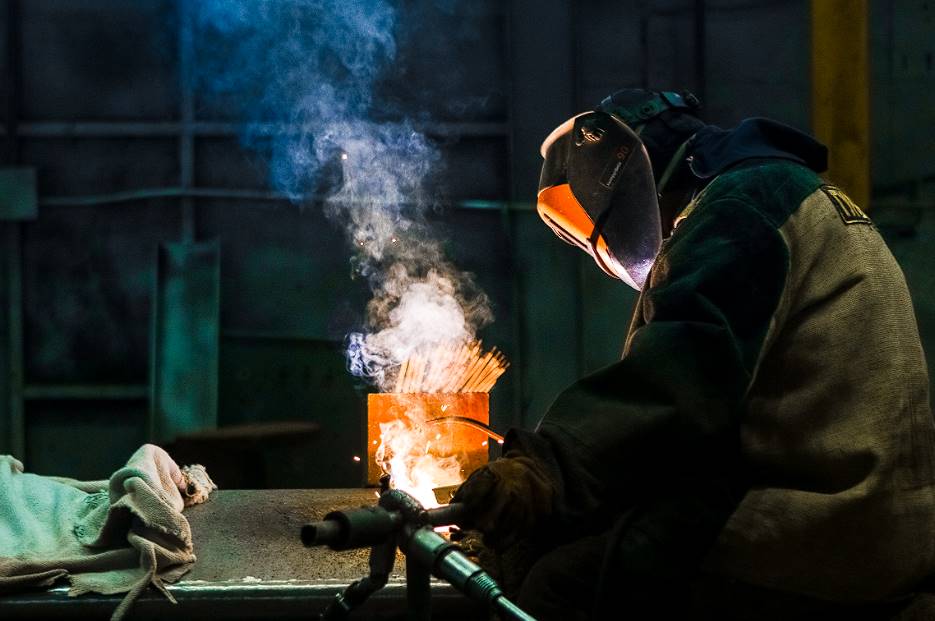
Overlap
Weld overlap occurs when the metal of the weld spreads beyond the joint, providing an imperfect and potentially dangerous connection. Incorrect welding procedures, incorrect welder settings, or faulty joint design are all potential contributors to this issue.
To prevent overlap, welders should rethink the design of the weld joint to get rid of any potential hot spots.
Excessive extension can be avoided by using less weld metal in the joint. Improving control and avoiding overlap can also be aided by increasing the current flow, though this depends on the welder settings. These measures allow welders to create welds with superior mechanical strength and joint integrity.
Burn Through
It is possible to blow a hole through the metal by applying too much heat during welding. Burn-through is one name for this flaw, but melt-through is another common term. Making a hole in a weld nullifies the seal and renders the weld useless.
Material with a thickness of less than a quarter inch is particularly prone to this flaw. It's less common with thicker stock, but it can happen if your welder settings are too high, the distance between the pieces is too great, or you're moving the torch too slowly.
Heat Affected Zone Cracks
When a base metal is heated to a certain temperature, its characteristics change, and it becomes brittle or soft, forming cracks in the heat-affected zone (HAZ). Welding and post-weld heat treatment, like quenching a hot steel part with oil to produce stress-relief cracking, can cause this type of failure in low alloy materials. The fissures caused by HAZs are irreparable. Even if they don't need welding, a professional should look at them to make sure.
Conclusion
Defects in the welding process are widespread in sheet metal manufacturing and can compromise both the structural and visual qualities of the weld. Incorrect welding procedures and inadequate patterning are frequent culprits. There are many potential causes of weld faults, including as inappropriate weld preparation, operator mistake, contaminated welds, low-quality welding materials, improper welding methods, bad joint design, and incorrect welder settings.
Inadequate weld preparation, operator mistake, contaminated welds, improper welding method, bad joint design, and wrong welder settings can all contribute to weld flaws. One of the most typical and dangerous weld faults is a crack, which rapidly weakens and spreads the weld. The most common fractures are hot, cold, crater, and longitudinal. Controlling the cooling rate, using appropriate welding consumables, and avoiding non-fusion can all help limit the likelihood of cracks in welds.
When the materials used to weld fail to properly fuse, a phenomenon known as "lack of fusion" occurs. The failure to fuse can be the result of incorrect welding settings, faulty preparation, or contamination. Higher welding heat input is necessary to properly melt and bond base metals, and proper welding processes ensure a well-formed weld pool, resulting to enhanced fusion. Successful fusion requires careful management of the cooling rate.
Welding flaws are a major problem in sheet metal manufacturing, and effective prevention and control are required to guarantee the weld's structural and aesthetic quality. Welding procedures that result in inclusions, contaminants, or faults can severely weaken the final product. Use of an appropriate welding process, avoiding the trapping of unwanted chemicals, and electrode management are all vital in the fight against inclusions. The size, depth, and sharpness of undercut flaws—notches in the base metal that generate uneven grooves—allows for their detection. Gas bubbles trapped inside the weld cause poor weld penetration, often known as wormhole weld.
Welders can avoid this problem by adjusting welding conditions, switching to dry electrodes, and keeping a good gas shield in place. Spatter, or shards of metal ejected by the welding arc, can be dangerous if it has been contaminated with gas bubbles. Welders can reduce spatter by adjusting welding parameters, purchasing high-quality welding equipment, and keeping gas shielding in good working order. Metal from the weld overlaps the joint, creating a subpar and potentially hazardous connection. Welders should utilise less weld metal in the joint and increase current flow to prevent overlap.
When a burn or melt goes all the way through the metal, the weld is no longer watertight. Low alloy materials might fail due to heat-affected zone cracks in the base metal. If you want high-quality work with fewer mistakes, you must check and fix these issues.
Content Summary
- Welding is an effective method for joining metals in sheet metal fabrication.
- Welding defects can lead to weld failure and weaken joints or products.
- Poor welding techniques and improper welding patterns can cause flaws in sheet metal welding.
- Investigating the origins of welding flaws is crucial to prevent them.
- A weld defect is any imperfection that hinders the weld's intended use.
- Defects can compromise the integrity and strength of a weld.
- Operator errors and contaminated welds are common causes of welding defects.
- Low-quality welding materials can contribute to weld flaws.
- Improper welding procedures, such as not using shielding gas, can lead to defects.
- Poor weld joint design can cause welds to fail under structural loads.
- Wrong welder settings, like incorrect arc length, can result in welding defects.
- Common welding defects include cracks, lack of fusion, inclusions, undercut, poor weld penetration, porosity, spatter, overlap, and burn-through.
- Cracks can weaken welds and spread rapidly, taking different forms like longitudinal, transverse, and crater cracks.
- Hot and cold cracks can occur due to high temperatures and incorrect filler material.
- Lack of fusion happens when materials do not fully fuse, leaving the joint vulnerable.
- Inclusions are impurities trapped inside a weld, affecting its strength.
- Undercut is a notch in the base metal that forms irregular grooves, leading to fatigue in the joint.
- Poor weld penetration results in weak joints and occurs due to incorrect settings or electrodes.
- Porosity is the trapping of gas bubbles inside the weld, weakening the joint.
- Spatter consists of small metal pieces flung from the welding arc and contaminates the base metal.
- Overlap occurs when the metal of the weld extends beyond the joint, creating an imperfect connection.
- Burn through is blowing a hole through the metal by applying too much heat during welding.
- Heat-affected zone (HAZ) cracks form in the base metal when heated to certain temperatures.
- Proper preparation, cleaning, and using high-quality materials help prevent welding defects.
- Proper welding techniques and settings contribute to strong and reliable welds.
- Controlling the cooling rate and using the right welding consumables help prevent cracks in welds.
- Fusion in welds can be improved by adjusting heat input and using proper welding techniques.
- Proper electrode management and electrode angle help prevent inclusions in welds.
- Adjusting welding parameters and depositing the right amount of filler metal help prevent undercut.
- Properly cleaning the base metal and ensuring gas shielding prevents porosity in welds.
- Adjusting welding parameters, using high-quality supplies, and maintaining gas shielding reduce spatter.
- Rethinking weld joint design and controlling current flow help avoid overlap.
- Avoiding excessive heat, adjusting welding parameters, and maintaining proper distance help prevent burn through.
- Welding in thin materials requires caution to avoid burn through.
- Heat-affected zone (HAZ) cracks can occur in low alloy materials during welding and heat treatment.
- Welders should pay attention to welding parameters and settings to prevent defects.
- Proper electrode management and welding techniques contribute to flawless welds.
- Adequate gas shielding and base metal cleaning help prevent gas pockets and inclusions.
- Adjusting welding parameters and using appropriate electrodes prevent lack of fusion.
- Controlling welding heat input and using proper techniques help achieve good fusion in welds.
- Adjusting current, voltage, and welding speed can help prevent undercut in welds.
- Proper welding techniques and managing electrode angles contribute to better weld penetration.
- Maintaining proper gas shielding and base metal cleaning reduce porosity in welds.
- High-quality welding supplies and adjusting welding parameters help reduce spatter.
- Proper joint design and controlling current flow help prevent overlap in welds.
- Adjusting welding machine settings and using the right electrodes help avoid burn through.
- Proper electrode management and welding techniques prevent poor weld penetration.
- Maintaining gas shielding and controlling welding parameters help prevent porosity in welds.
- Using high-quality materials and controlling welding heat input reduces welding defects.
- By following best practices and paying attention to welding parameters, welders can produce high-quality welds with fewer defects.
Frequently Asked Questions
To attain high-quality welds, prioritising certain factors is essential. Proper joint preparation ensures a strong foundation for the weld. Employing appropriate welding techniques enables precise and efficient welding.
Clean base metals devoid of contaminants contribute to defect-free welds. Selecting suitable welding consumables ensures optimal fusion and mechanical strength. By giving due attention to these aspects, welders can consistently achieve top-notch welds that meet industry standards and customer expectations.
Indeed, welding defects pose serious risks to the strength and integrity of welds. When defects are present, welds may fail under stress, leading to potential safety hazards in various applications. Ensuring defect-free welds is paramount to maintaining structural stability and preventing catastrophic failures in critical components and structures.
Weld inspection plays a vital role in preventing defects, allowing for early detection and resolution of potential issues. Conducting thorough inspections throughout the welding process ensures that any deviations or anomalies are identified promptly.
By addressing these concerns in their initial stages, welders can take corrective actions and prevent defects from compromising the weld's quality and structural integrity. Regular weld inspections instil confidence in the weld's reliability and conformity to industry standards, contributing to the overall success of welding projects.
Each welding technique has unique characteristics that affect the weld's quality. By selecting the appropriate welding process and techniques for the specific application, welders can minimise the likelihood of defects and ensure strong, reliable welds. Careful consideration of material type, joint design, and desired properties can help welders make informed decisions and achieve superior results.
Improving welding skills and reducing defects requires dedication and continuous effort. Regular practice sessions allow welders to refine their techniques and gain confidence. Staying updated on the latest welding advancements ensures they are familiar with new tools and methods.
Seeking guidance from experienced welders provides valuable insights and tips to overcome challenges effectively. By combining these strategies, welders can enhance their expertise, produce high-quality welds, and minimise the occurrence of defects.

